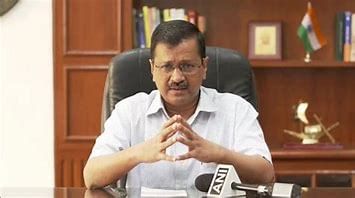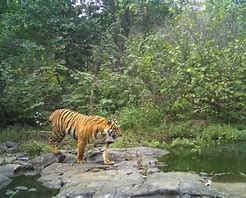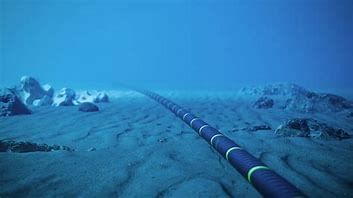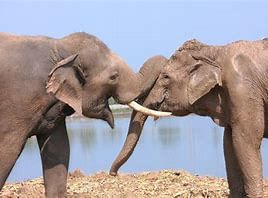UPSC Daily Current Affairs- 2nd March 2024 | Current Affairs & Hindu Analysis: Daily, Weekly & Monthly PDF Download
GS-II
Defamation in the Digital Age: The Case of Arvind Kejriwal
Subject: Polity and Governance

Why in News?
In a recent legal development, the Supreme Court of India intervened in a defamation case involving Delhi Chief Minister Arvind Kejriwal.
- This case highlights the intricate intersection of online communication, legal frameworks, and freedom of expression in the digital era.
What is the Right to Free Speech?
- Freedom: Article 19(1) (a) guarantees the freedom of speech and expression to all citizens. It is the first condition of liberty and plays an important role in forming public opinion.
- Restrictions: As per Article 19(2), restrictions can be imposed upon the freedom of speech and expression in the interests of:
- Sovereignty and integrity of India,
- Security of the state,
- Friendly relations with foreign states,
- Public order, decency or morality, or
- In relation to contempt of court,
- Defamation, or
- Incitement to an offense
- Online Discourse: The proliferation of social media platforms necessitates a nuanced understanding of free speech rights in the digital realm, balancing individual liberties with societal interests.
- Immunity for Politicians: For politicians, while they enjoy the right to free speech, they are also subject to certain limitations. Criticism of the government or its policies is generally allowed as long as it does not incite violence or hatred.
Legal Conundrum over Digital Defamation
- Background: Kejriwal faced defamation charges for retweeting a video by YouTuber Dhruv Rathee, which made defamatory statements against the BJP’s IT cell.
- Legal Proceedings: Delhi High Court upheld the summons issued to Kejriwal, emphasizing the significant impact of retweets by public figures.
- Constitutional Considerations: Right to free speech under Article 19(1)(a) of the Indian Constitution is subject to reasonable restrictions, including defamation laws outlined in Article 19(2).
- Retweeting vs. Endorsement: Court intervention highlights the distinction between retweeting and endorsing content; while retweeting may not always imply endorsement, public figures bear higher responsibility for their online actions.
- Defamation Laws: Indian Penal Code, Section 499 criminalizes statements aimed at damaging an individual's reputation, with online communication posing unique enforcement challenges.
Legal Precedents and Interpretations
- Shreya Singhal vs. Union of India (2015): Section 66A of The IT Act, 2000, had criminalised sending “offensive messages” utilizing “a computer resource or a communication device”. This provision was quashed by the SC given the ambiguity in the definition of the term “offensive”.
- Subramanian Swamy vs. Union of India (2016): The Supreme Court affirmed the constitutionality of criminal defamation laws, balancing the right to reputation with freedom of expression.
- Kaushal Kishore vs. Union of India (2017): The Court clarified that additional restrictions on free speech must align with Article 19(2) and cannot be arbitrarily imposed.
Implications for Online Discourse
- Scope of Defamation: Online retweets amplify the dissemination of allegedly defamatory content, raising questions about liability and accountability.
- Responsibility of Public Figures: Public figures like Kejriwal face heightened scrutiny for their online activities, given their influence and reach on social media platforms.
Conclusion
- This defamation case underscores the evolving dynamics of communication in the digital age.
- As online discourse continues to shape public opinion, striking a balance between freedom of expression and legal safeguards against defamation remains a pressing challenge.
- The Supreme Court’s intervention provides an opportunity to reassess existing laws and norms governing online speech, ensuring that rights and responsibilities are harmonized in the digital realm.
Source: Money Control
GS-III
Foreign Exchange Reserve
Subject: Economy
Why in News?
India's foreign exchange reserves surged by $2.98 billion to $619.07 billion recently.
About Foreign Exchange Reserve:
- Foreign Exchange Reserves (Forex Reserves):
- Reserve assets held by a central bank in foreign currencies.
- Foreign assets include currencies, bonds, treasury bills, and government securities not in the domestic currency.
- Denominated and expressed in US dollars, serving as the international numeraire.
- RBI is the custodian of India's Forex reserves.
- Components of India’s Forex Reserves:
- Foreign Currency Assets (FCAs): Held in currencies like USD, euro, pound sterling, AUD, and JPY.
- Gold
- SDR (Special Drawing Rights): IMF reserve currency.
- RTP (Reserve Tranche Position): IMF reserve capital.
- Purpose:
- Back liabilities in the issued currency, support exchange rates, and set monetary policy.
- Ensure RBI has backup funds in case of rapid devaluation or insolvency of the national currency.
- If Rupee devalues, RBI sells dollars in the Indian money market to check depreciation.
- Strong Forex reserves enhance a country's international image and assure trading partners of payment reliability.
- Attracts foreign trade and fosters a positive reputation with trading partners.
Source: Economic Times
National Electronic Fund Transfer (NEFT)
Subject: Economy

Why in News?
The National Electronic Funds Transfer (NEFT) reported its highest-ever daily number of transactions at 4.10 crore recently.
About National Electronic Fund Transfer (NEFT):
- Electronic centralised payment system owned and operated by the Reserve Bank of India (RBI).
- Facilitates fund transfers between accounts held in any participating bank branch.
Usage:
- Utilized by organizations, companies, and individuals for transferring funds between bank accounts.
Transaction Processing:
- Payments processed and settled in half-hourly batches as per RBI guidelines.
- Minimum Transfer Value: Rs. 1, Maximum transfer value: No limit.
Advantages:
- Round-the-clock availability on all days of the year.
- Near-real-time funds transfer securely to the beneficiary account.
- Pan-India coverage through a large network of bank branches.
- Beneficiary doesn't need to visit a bank branch; remitter can initiate transactions from home or workplace using internet banking.
- Penal interest provision for delays in credit or return of transactions.
- No charges levied by RBI from banks; no charges to savings account customers for online NEFT transactions.
- Transaction charges are capped by the RBI.
Applications:
- Payment of credit card dues, loan EMIs, inward foreign exchange remittances, etc.
Source: Money Control
 |
Download the notes
UPSC Daily Current Affairs- 2nd March 2024
|
Download as PDF |
Amrabad Tiger Reserve
Subject: Environment
Why in News?
The leopard population increased considerably in Amrabad Tiger Reserve, according to the ‘Status of Leopards in India’ report released recently.
About Amrabad Tiger Reserve:
- Location: It is located in the Nagarkurnool and Nalgonda districts in the southern part of Telangana.
- It is one of the largest tiger reserves in India. It is the second-largest Tiger Reserve in terms of core area.
- Earlier, it was part of 'Nagarjunasagar-Srisailam Tiger Reserve, but post-state bifurcation, the northern part of the reserve was vested with Telangana state and renamed 'Amrabad Tiger Reserve'. The southern portion continues to be 'NSTR' with Andhra Pradesh.
- ATR covers a part of the Nallamala Forest and is home to a variety of flora and fauna.
- Major reservoirs like the Srishailam Dam and Nagarjunsagar Dam are fed by the river Krishna and its several perennial streams that originate in the Tiger Reserve.
- Flora:
- Dense grass occurs in 30% of the area and is scattered in an additional 20%.
- Fauna:
- Major wild animals found are Tiger, Leopard, Wild dog, Indian Wolf, Indian fox, Rusty-spotted cat, Small Indian civet, Sloth bear, Honeybadger, Wild boar etc.
- Some important bird species include Eagles, Pigeons, Doves, Cuckoos, Woodpeckers, Drongos etc.
Source: Telangana Today
Under-Sea Cable Disruptions expose key Telecom Vulnerability
Subject: Economy

Why in News?
Three undersea cables connecting India to global telecom networks—Asia-Africa-Europe-1, Europe India Gateway, and Tata Global Network—have been damaged in the Red Sea Conflict, possibly due to targeted attacks.
What are Submarine Communications Cable?
- Submarine cables are laid on the seabed between land-based stations to transmit telecommunication signals across stretches of ocean and sea.
- These cables employ fiber-optic technology, with optical fiber elements coated with protective layers suitable for the marine environment.
- Submarine cables offer a reliable, cost-efficient, and high-capacity means of internet connectivity compared to satellites.
India’s Submarine Cable Infrastructure
- With 17 submarine cables landing in 14 cable landing stations, mainly in Mumbai and Chennai, India is actively expanding its undersea connectivity.
- The Telecom Regulatory Authority of India (TRAI) has introduced regulations categorizing Cable Landing Stations (CLS) into Main CLS and CLS Point of Presence to enhance data flow and reduce reliance on foreign providers.
- TRAI’s recommendations also include recognizing submarine cable operations as critical services, proposing legislative amendments, and suggesting exemptions from custom duty and GST for essential goods.
- Examples:
- MIST Submarine Cable System (connecting India with Myanmar, Thailand, Malaysia, and Singapore)
- Reliance Jio Infocomm’s India Asia Xpress (IAX) (India to the Maldives, Singapore, Sri Lanka, and Thailand)
- India Europe Xpress (IEX) (India to Italy via Saudi Arabia and Greece)
- SeaMeWe-6 project (Singapore to France via India, Bangladesh, and Maldives)
- Africa2 Cable (connecting India with the UK via several African countries)
Vulnerabilities in Telecom Infrastructure
- Ongoing Conflict’s Impact: Damage to undersea cable systems in the Red Sea due to regional conflict exposes vulnerabilities in India’s internet and overseas telecom connectivity.
- Limited Connectivity: India’s relatively few connections to such cables and regulatory restrictions on expanding the submarine cable industry pose significant concerns.
- Choke Points: Cable disruptions underscore a choke point in subsea connections between Europe and Asia, particularly concerning for India due to limited connections and regulatory constraints.
Current Challenges in Submarine Cable Infrastructure
- Capacity Shortages: Rising demand from data centers, retail usage, and enterprise applications exacerbates capacity constraints in India’s submarine cable networks.
- Opaque Ownership Structures: Lack of transparency in ownership of submarine cable systems raises national security concerns, particularly regarding the involvement of International Long Distance Operators (ILDOs).
- Regulatory Constraints: Stringent regulations impede investment in submarine cable infrastructure, limiting redundancy and hindering security measures.
Implications of TRAI Proposals
- Digital Transformation: TRAI’s recommendations align with India’s digital ambitions, facilitating the expansion of data centers and enhancing internet connectivity.
- Balancing Act: DoT’s decision on TRAI’s proposals will shape the future of India’s submarine cable industry, balancing the interests of stakeholders and national security concerns.
Way Forward
[A] Replicating Success in Indian Waters
- Adopting Legislative Framework: India can collaborate with Australia to enact similar laws within its territorial waters, leveraging sovereign rights over submarine cables within the EEZ.
- Establishing Protection Zones: Creation of Submarine Cable Protection Zones, consistent with UNCLOS provisions, enables India to enforce jurisdictional and physical safeguards.
- Regional Cooperation: India can advocate for the adoption of Australia’s model legislation across the Indian Ocean Rim Association, fostering multilateral cooperation in protecting subsea infrastructure.
[B] Operational Implementation and Collaboration
- Coordination Mechanisms: Collaboration among navies and coastguards of Quad nations and like-minded countries facilitates operational coordination in monitoring and protecting high-density cable zones.
- Policy Alignment: Aligning domestic legislative frameworks with regional initiatives ensures seamless coordination and collective action in safeguarding submarine assets.
- Reducing Risks: Enhanced cooperation minimizes the risk of cable damage and sabotage, bolstering connectivity and resilience in the Indian Ocean Region.
Conclusion
- India stands at a pivotal juncture in safeguarding its subsea infrastructure amidst evolving geopolitical dynamics.
- India must fortify its submarine cable assets, ensuring uninterrupted connectivity and advancing its digital aspirations.
- Through proactive legislative measures and strategic collaboration, India can mitigate risks and emerge as a global leader in subsea infrastructure protection.
Source: The Hindu
Novel Behaviour of Elephants
Subject: Environment

Why in News?
A recent study aims to delve into the peri-mortem and post-mortem strategies of Asian elephants, offering insights into their behavior in shared human spaces amid environmental changes.
- The study area covered fragmented forests, tea estates, agricultural lands, and military establishments in the vicinity of the Gorumara Wildlife Division and Buxa Tiger Reserve in West Bengal.
Elephants in India
| Details | |
| Population Estimate | India hosts the largest population of wild Asian Elephants (Elephas maximus), with around 29,964 individuals, Approximately 60% of the global population (2017 census). |
| Leading States | Karnataka holds the highest number of elephants, followed by Assam and Kerala. |
| Conservation Status | IUCN Red List: Endangered. CMS: Appendix I. Wildlife (Protection) Act, 1972: Listed under Schedule I, CITES: Appendix I. |
| Conservation Initiatives | Project Elephant launched in 1992, covering 23 states across India. Contributed to the increase in wild elephant population from around 25,000 in 1992 to about 30,000 in 2021. Establishment of Elephant Reserves. Total 33 in numbers covering approximately 80,777 Sq.km. |
Recent finding
- Peri-Mortem Strategies: Asian elephants observed carrying carcasses using trunks and legs before burying them, positioning them in a 'legs upright' stance.
- Herding Behavior: Elephant herds display avoidance behavior, opting for parallel routes to avoid paths containing buried calf carcasses.
- Burial Locations: Calves found buried in irrigation drains of tea estates, suggesting a preference for specific burial sites.
- Herding Dynamics: Unique handling of carcasses by herd members indicates care and affection towards deceased calves.
- Space Constraints: Strategic decision-making apparent in prioritizing burial of the head over the feet, especially in situations with spatial limitations.
Environmental Context and Elephant Behavior
- Impact of Environmental Changes: Rapid environmental transformations and habitat destruction push elephants to explore human-dominated areas, resulting in the emergence of novel behaviors.
- Limited Documentation: While similar behaviors are documented in African contexts, elephant calf burial in the Asian context remains largely undocumented.
General Social Behaviour of Elephants
Elephants exhibit a wide range of social behaviors that highlight their complex and intelligent nature.
Matrilineal Social Structure:- Elephants organize into multi-tiered societies, starting with family units of related females and their calves, forming bonds with other families to create clans and sub-populations.
- Senior matriarchs lead herds, making decisions on movement and resource allocation.
- Elephants communicate through various calls, gestures, and physical contact, employing a sophisticated system with over sixty different calls, including trumpets and rumbles for long-distance information transmission.
- Display empathy by comforting distressed companions through physical contact and vocal sounds.
- Engage in mourning behaviors similar to humans, grieving for their dead.
- Cooperate in raising young, with adolescent females aiding in calf care.
- Engage in cooperative actions such as adopting tormented infants or assisting wounded herd members.
- Elephants exhibit distinct personalities influencing group interactions.
- Varied traits include strong leadership qualities or introversion, impacting how they engage with other elephants.
Source: The Hindu
|
39 videos|4566 docs|979 tests
|
FAQs on UPSC Daily Current Affairs- 2nd March 2024 - Current Affairs & Hindu Analysis: Daily, Weekly & Monthly
| 1. What is the impact of defamation in the digital age, as seen in the case of Arvind Kejriwal? |  |
| 2. How do disruptions in under-sea cables expose key telecom vulnerabilities? |  |
| 3. What is the significance of Foreign Exchange Reserves for a country's economy? |  |
| 4. How does the National Electronic Fund Transfer (NEFT) system benefit individuals and businesses in India? |  |
| 5. What is the significance of the Amrabad Tiger Reserve in terms of wildlife conservation? |  |


























